Lockdown projects
12
12
|
|
This guy knows all the tricks to work fast. A clever clamp carrier:
https://youtu.be/q2t0gLYPNVM I chuck medium clamps in a drawer. 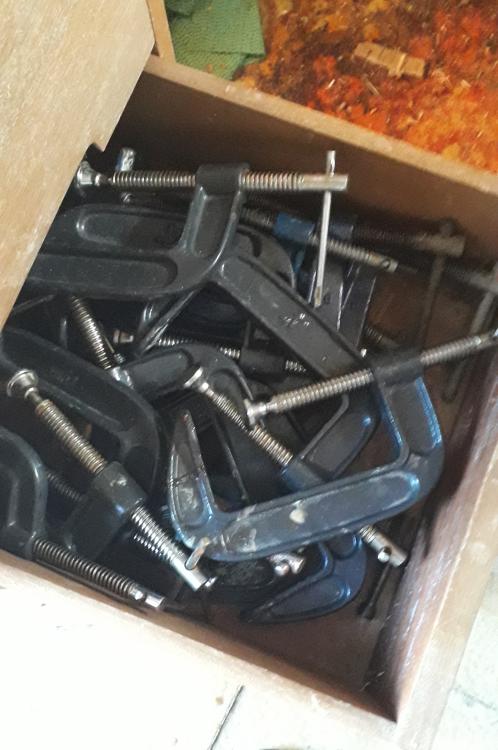 Longer are clamped onto a 2x1 frame of a shed door (so I don't lose them, allegedly): 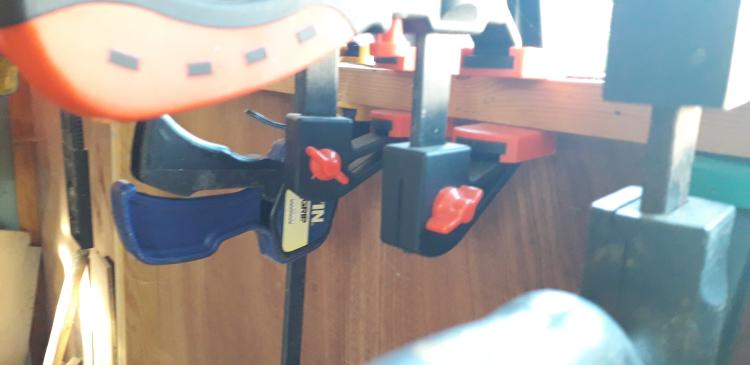 Stay dust free Paul |
|
|
This post was updated on .
Best thing you could do with a fat bike wheel. 😎
He should have taken the free wheel pawls out so it would rotate in both directions. Sent from my Xperia by Sony smartphone |
|
|
Or he could have used a long bolt or theaded rod to suspend the ply disk. Simpler by far. 😎
It's a novel approach in novel times 😉 |
|
|
Oh the memory of a clear workshop with plenty of space, benches and machinery.
One project could be one of Timmo's camping boxes, - if you've got the wood etc. Richard |
|
|
Normally I have to keep one side of the garage clear for my wife's car. Its all part of the deal in maintaining a harmonious relationship. So every night I have to tidy everything up. Right now she's going nowhere and I pointed out that her battery would soon be flat if all the car did was shunt back and forward. So now it stays outside and I never have to tidy up. And I can't find a bloody thing. Take care all. G. Sent from my Xperia by Sony smartphone ---- inwe [via UK HBBR Forum] wrote ---- Oh the memory of a clear workshop with plenty of space, benches and machinery. One project could be one of Timmo's camping boxes, - if you've got the wood etc. Richard If you reply to this email, your message will be added to the discussion below:
http://uk-hbbr-forum.967333.n3.nabble.com/Lockdown-projects-tp4031447p4031450.html
To start a new topic under General Discussion, email [hidden email]
To unsubscribe from UK HBBR Forum, click here. NAML |
|
|
In reply to this post by inwe
Timmos clever camping box is a 3D jigsaw.
Here is a simpler project to enhance your pillar drill. Find an offcut of ply about twice the size of the table. Fit it flush with the vertical tube and screw or bolt the ply to the table: 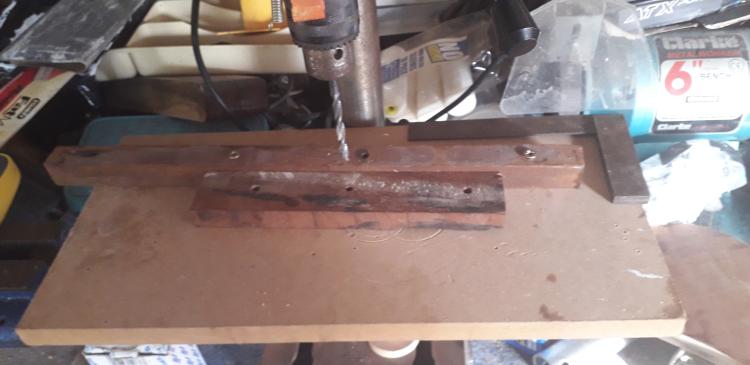 I took my drill apart to release the table, then screwed the ply from below using penny washers. A larger wooden table really helps to support larger workpieces that need to be drilled. Tables have a angle edge that makes clamping fiddly and hard. But clamping the workpiece to the larger ply table is quick and firm. I needed a quick jig to drill holes a constant distance from the edge. One screw in the straight batten, line up the workpiece accurately with the drill, hold the jig and piece steady then drive in another screw. Then you can slide the piece along the jig and every hole has the same depth from the edge. Simples! Paul |
|
|
Cook boxes are not that complicated.
Latest version... 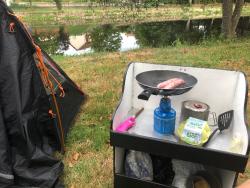  Fits on the back of motorbike, here on my Royal Enfield Bullet, modern Indian Euro 4 version! 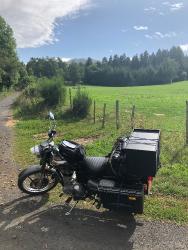 Puy de Dome in the background. 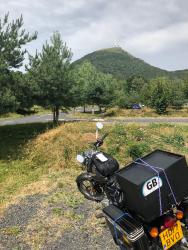
|
|
|
Well. Today I glassfibred the foam male mould for the keel.
Other than that I've spent the duration repairing the garage, or working on the model railway.. 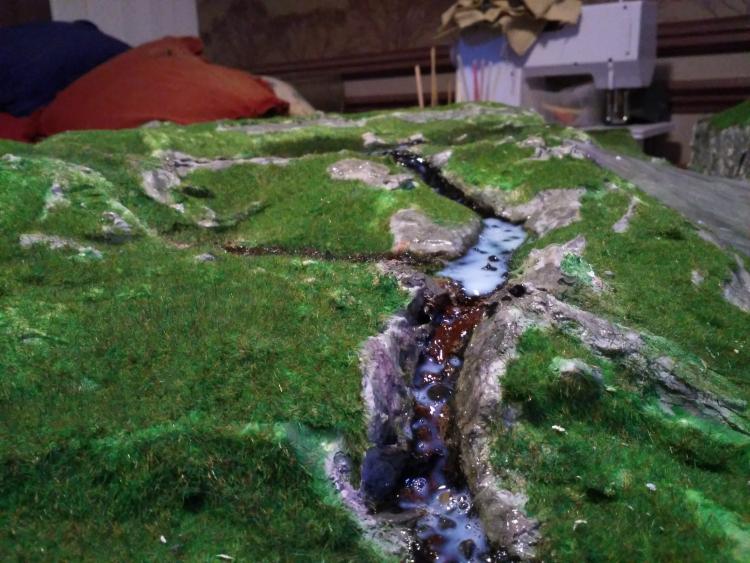 The white in the burn is another layer of varnish not yet set. 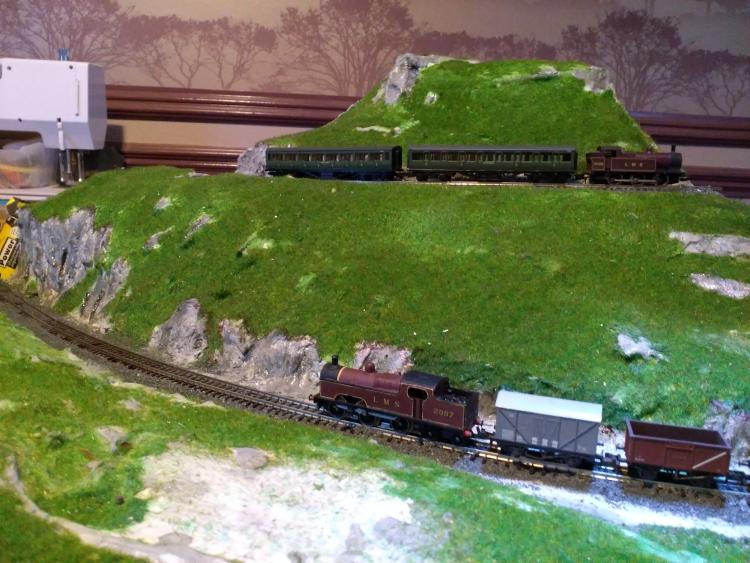 I've just started building a model of this ( the one in the background Type 84 radar) for the railway, the core of the building is done a long way to go..  PS that's 1978, I'm the one in the middle.. |
|
|
That was RAF Neatishead? Simon |
|
|
This post was updated on .
Yep RAF Neatishead, which is now the site of the Radar Museum, I'm intending to volunteer there when I've retired https://www.radarmuseum.co.uk/
The frightening thing is much of the stuff in there I worked on, I mean not like I worked on, but actually worked on. I was also posted to RAF Benbecula, Boulmer, Locking, Staxton Wold, And Swinderby of course. Having gained a X on the type 84, and Qs on the type 88/89, digital data links and analogue channeling ( QLU), SSR 750. Since the 88 is effectively a mobile 84 you could say I was familiar with it. For those not familiar with RAF terminology, X is cross trained on the equipment, Q is you been on a course and qualified on the Equipment. SSR 750 is the small aerial on the top of the T84, and is an Identification Friend or Foe radar it sends coded pulses to the aircraft and expects the correct coded pulses back. Digital data links, connected everything together. It took the turning angles on the radars, then added radar signals, telephone signal, and various other bits of data both analogue and digital and sent it to other sites. After the RAF I joined GEC and worked on the AI 24 Foxhunter radar and it's test equipment, going to many more RAF stations including the Falklands and Saudi Arabia. |
|
|
I once spent a very bleak week working from the RAF base on Benbecula. I was delivering a course up at the research station on North Uist (run by Qinetiq). Think it must have been in February. The wind and rain were relentless. But it was a beautiful place. Had a couple of days spare before I could fly back out and the loan of a car so was able to explore North Uist, South Uist and Benbecula.
Then a friend showed me pictures of the beaches in summer! What a difference, just as beautiful but a lot more inviting. The people I met all owned the most innapropriate boats! Enterprises and Toppers etc. Not a decent gaff rigged double ender designed for the seas round there among them. They all admitted they rarely sailed them. Tim.
|
|
|
In reply to this post by The Q
Q,
My Dad was a telephonist in the RAF for his National Service - not as dull as you might think! He developed an interest in electronics and radio, ending up at Smiths Industries fault finding and fixing auto-pilots and head up displays for military jets. He took up amateur radio, first modifying 1960s PYE valve operated radio telephones for the 144-146 MHz band. As ex-equipment they were cheap, but noisy, big and heavy. Transistor converters were hand built by the hundreds, soon him and his mate had portable receivers. Then along came DF (direction finding) hunts at the local amateur radio club! Somebody would drive to an unknown location and transmit every 30 mins for about 5 minutes. Out came the most ingenious home brew kit - a tranny radio mounted one end of a 3 foot length of perspex - the other end was a ferrite rod wound with a coil. A compass was in the middle. The perspex minimises stray capacitance and inductance which might affect the angle of the aerial or compass accuracy. You can guess by now DF hunts were getting competitive. So Dad would null out the signal by rotating the kit until the transmission was quiet, they took the compass bearing, knew their location and plotted a line on a map. Then everybody jumps in the car to race to another location for another fix. Eventually you have enough fixes to guess the location, often a pub car park! Happy summer days, Dad and his mate often won, and I always got a coke to drink. -Paul |
|
|
In reply to this post by The Q
Hi Q Your models do look good. I am not a model maker or a railway enthusiast but I am a member of a model engineering club 'Plymouth Miniature Steam' - I joined because I like talking about metalworking and small machine tools.
Re the radars, for most of my life I have been a member of a small Essex based sailing group, their website is here: http://www.hostellerssailingclub.org.uk/ One person who was a member of this club almost from the start I think, was Doug Reece. Doug died a few years ago but shortly before he died he sugested I scan his photo album and put it on the internet, it is at the above website under archive>other. Doug worked at Marconi in Chelmsford and a few pictures in his photo album were of radars, probably during your period in the RAF - see below. Coming back to models, I discovered shortly before the lockdown that Exeter public library has a 3D printing machine and as I understand it, an annual payment of £70 entitles you to use the machine, I guess you probably have to pay something for consumables as well. Once the lockdown is over and libraries are open again I intend to investigate further. My 3D computer drawing package is my favourite computer game, I like using it to draw various things but often boats of one kind or another, I suppose a modelling hoby but just in the virtual world. Big advantage over real world modelling is that the results don't take up significant storage space! Not that I have anything much in mind to 3D print at the moment since hobby level 3D printers work only in plastics and many items I would want to make for boats need to be metal, ideally stainless steel. But I would think 3D printers would be ideal for making small detailed models, are railway modellers aware of that I wonder? 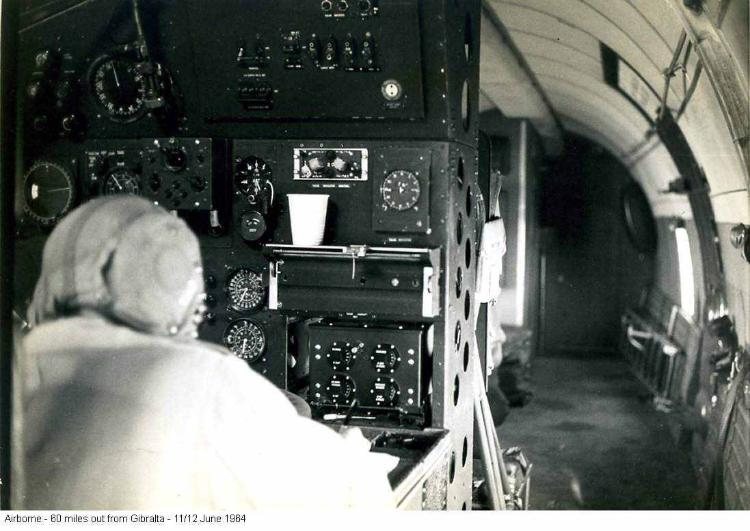  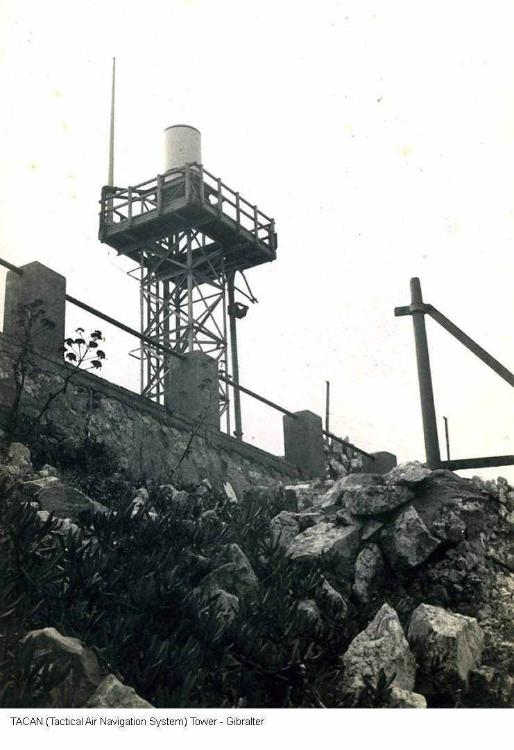 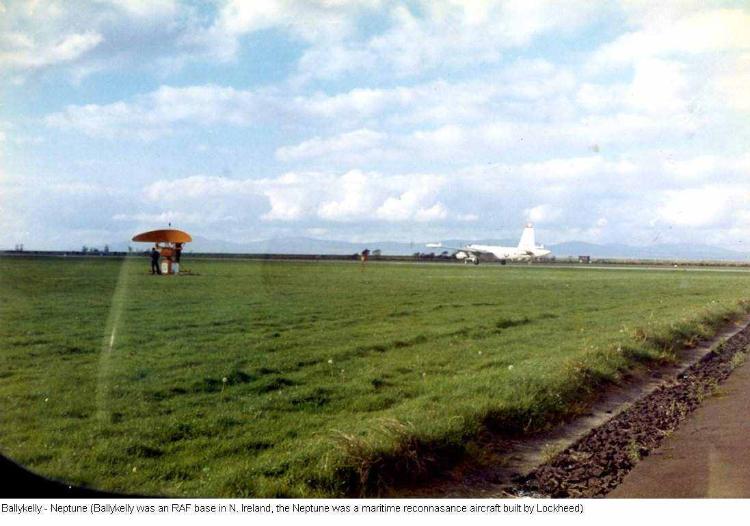 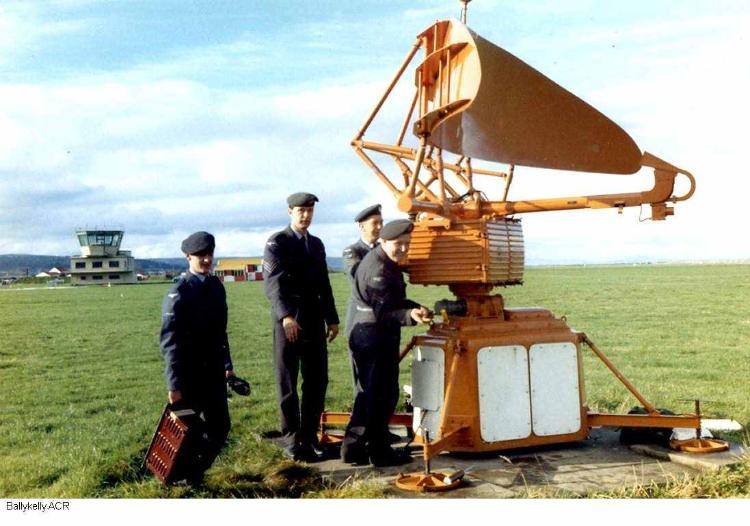
|
|
|
John,
My brother in law has a 3D printer for his historically accurate model railway - his Dad was a signalman for the Liss railway (SWR). £70 for using a 3D printer is tempting, although prices are getting as low as £199. Paul |
|
|
Completed one of my lockdown projects, the driving trailer for my traction engine. Involved taking a garden trolley, modifying the position of the front axle, welding a new frame member and building the trailer assembly. So now I can sit on it and carry cargo or a couple of passengers.
 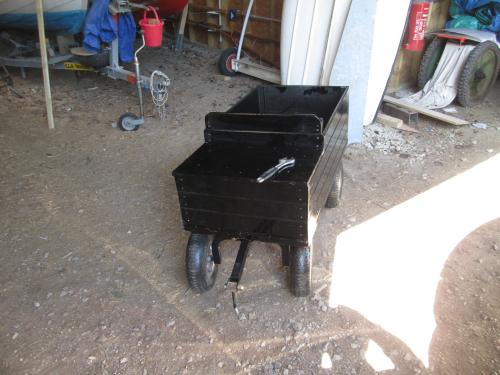 Stay safe Richard |
|
|
In reply to this post by Paul H (admin)
I bought an Anycubic Photon resin 3D printer last year, cost about £200. The print quality is astonishingly good, these are a couple of test prints from when I first got it:
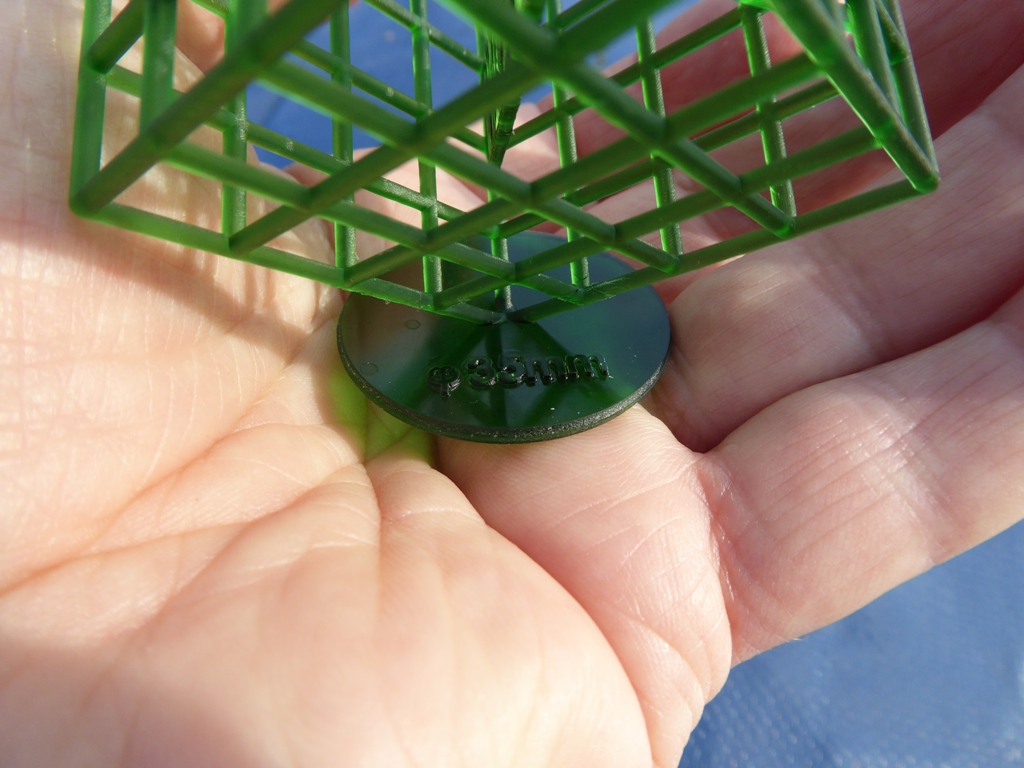 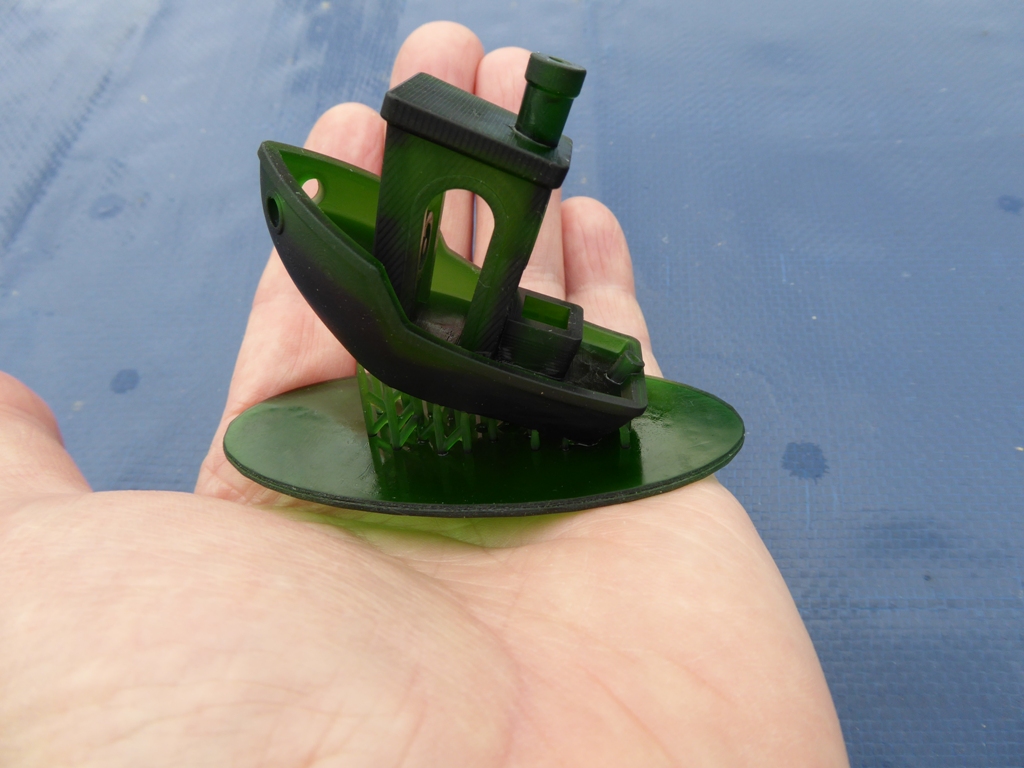
|
|
|
I'm mostly just fretting in the sunshine. On Wed, 22 Apr 2020, 16:16 Jeremy [via UK HBBR Forum], <[hidden email]> wrote: I bought an Anycubic Photon resin 3D printer last year, cost about £200. The print quality is astonishingly good, these are a couple of test prints from when I first got it: |
|
|
Hi,
Making a new paddle here  Steve 
|
|
|
In reply to this post by inwe
One of many projects:
Chunky new gaff jaws, as per Paul Fisher's plans. The old Heron jaws were small and cracked slightly. I'm hoping this will be much stronger; hardwood glued to gaff to give good clearance and strengthen the sail slot which can twist open. Laminated 2 x 9mm ply with at least 1in from parall cord to edge. 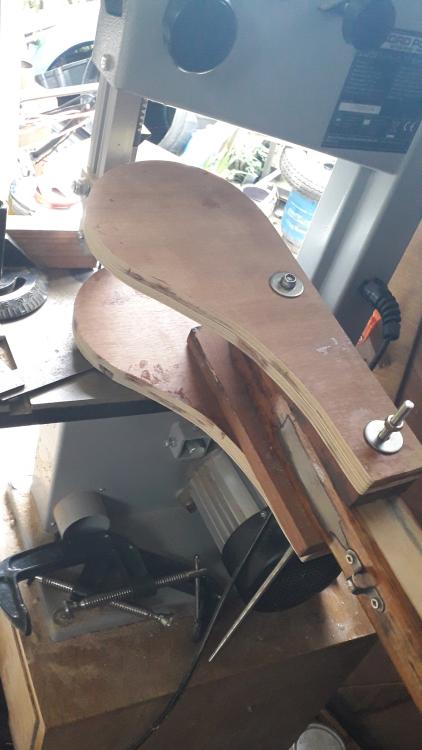 Stay well Paul |
|
|
Hmm someone's been running round my past...
Dad's last RAF station was RAF Ballykelly before he was invalided out in 1963. RAF Ballykelly airfield had the interesting problem of a railway line running across the runway. There was a direct telephone line from. Air traffic control and the nearest signal box. The railway had priority in all but emergencies.. I'm qualified to maintain Tacan, someone had to look after the one on Benbecula, as transport out there could be a problem. I've actually been to live on Benbecula twice , 1971-75 when dad got posted out there as a civil servant. And 83-85 when I got posted there. The day after I got my orders for posting, I received a phone call saying did I need arrival instructions, I said no, I had seen the radar arrive.. They said I was too young to do that, but I described everything there and pointed out I was at school at the time, on South Uist. The army had half a dozen wayfarers at Loch Carnan, but I took up my laser and Lysander. The laser was great planing around by the causeway at high tide between the Benbecula and South Uist,. The Lysander was used on longer trips carefully choosing the weather... I spent six months at Marconi college Chelmsford, while in the RAF on a T88/89 course, in 1983. I remember the old Pye sets they had a couple kicking around at RAF Locking Amateur Radio Club, which was G1FC, and G3RAF, G1 Flying Corps gives you an idea of the age of that licence. I never got my license, every time I arranged to take the test I got posted or detached.. I've been considering a 3D printer, but as yet I'm not ready to use one, and they are improving all the time.. My next non boat building task is a newly ordered she'd, replacing an ancient corrugated old one that's falling apart. It will be interesting meeting some of you guys once meets can be held again. |
«
Return to General Discussion
|
1 view|%1 views
| Free forum by Nabble | Edit this page |




